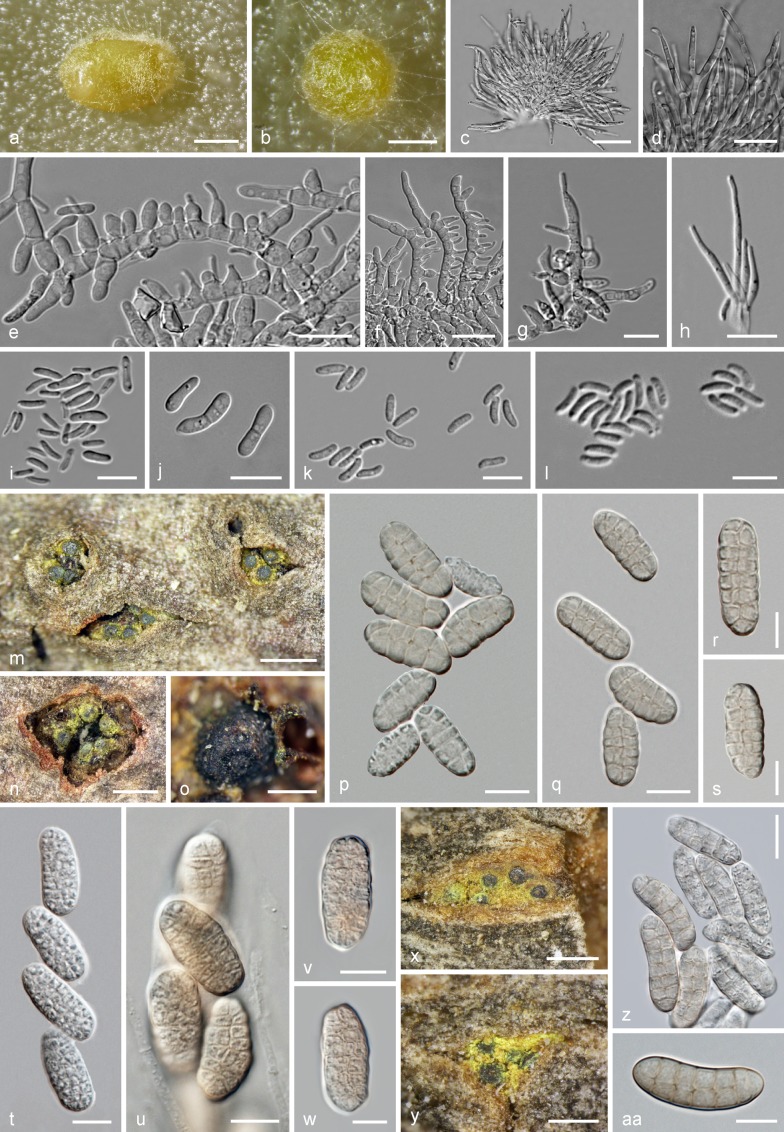Fig. 5.
a–l: Thyronectria rhodochlora, asexual morph. a, b. Pycnidia (MEA, 15 °C, 65 d); c–h. conidiophores and phialides (c, d, h. from pycnidium on MEA, 15 °C, 65 d; c. shrub-like; e–g. from effuse conidiation, showing pegs and phialides; MEA, RT, 3 d); i–l. conidia (i, j: MEA, RT, 3 d; k, l: from pycnidium on MEA, 15 °C, 65 d) (all in water except h (in 3 % KOH)). a–d, h, k, l: NP7; e–g, i, j: NP. — m–s. Thyronectria virens (isolectotype BPI 631193). m–o. Ascomata in bark (o. old open ascoma attached to the side of a Diplodia conidioma); p–s. ascospores. — t–w. Ascospores of Thyronectria cf. virens (WU 33426; u. in ascus, note apical paraphyses). — x–aa. Thyronectria zanthoxyli. x, y. Stromata; z, aa. ascospores. x, y, aa. lectotype NYS 3611; z. isolectotype NYS 3438. — Scale bars: a, m, n, x = 0.5 mm; b, o, y = 0.3 mm; c = 20 μm; d, f = 15 μm; e, g–j, p, q, t, u, v, z = 10 μm; k, l, r, s, w, aa = 7 μm.

